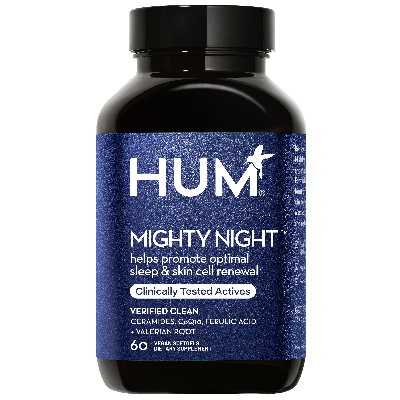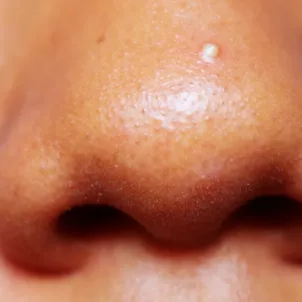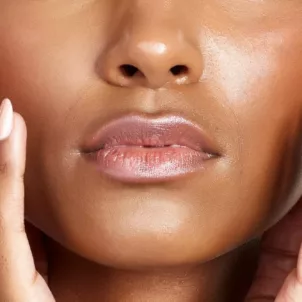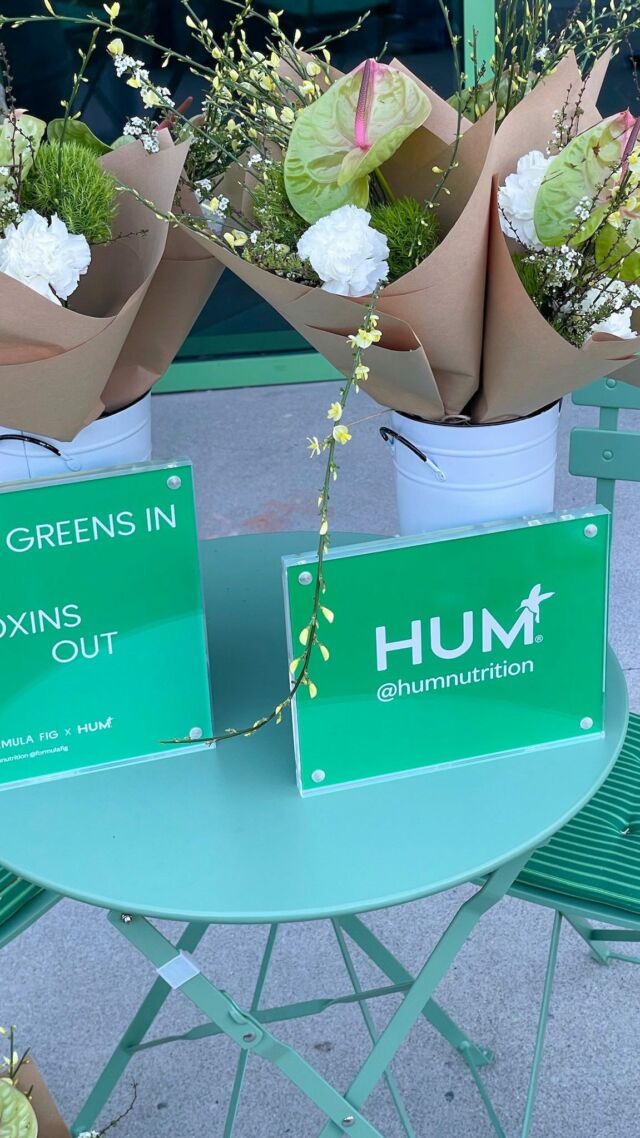What is skin purging, exactly? Gaby Vaca-Flores, RDN, CLE, outlines its causes, appearance, and differences from adverse skin reactions. Plus: how to deal with skin purging.
If you’ve experienced blemishes after trying a new product, you may have wondered if that’s normal. While it may feel alarming at first, post-product blemishes aren’t always a bad thing. In fact, it can be surprisingly beneficial.
Read on if you’re curious whether you’re experiencing skin purging or another type of reaction to your new skincare find.


What is skin purging?
The term skin purging refers to a temporary flare-up evidenced by breakout-like bumps following the use of a new skincare product.What causes skin purging?
The skin’s outermost protective layer is the epidermis, which constantly purges itself to maintain proper function and a balanced microenvironment. In fact, the epidermis renews itself approximately every 28 days for young adults and every 40 to 50 days in the elderly. This process is commonly referred to as the skin cell turnover rate. Simply put, purging of the skin occurs when the skin cell turnover rate is interrupted. When the skin cells renew themselves too quickly, it can lead to less effective shedding of dead skin cells, buildup, and sebum. The result? Blemishes that can have you second guessing your new skincare find. Then, when it comes to ingredients and products most likely to cause skin purging, retinols and facial peels are usually the main culprits. However, other skincare products may also contribute to purging, including cleansers, serums, masks, and supplements.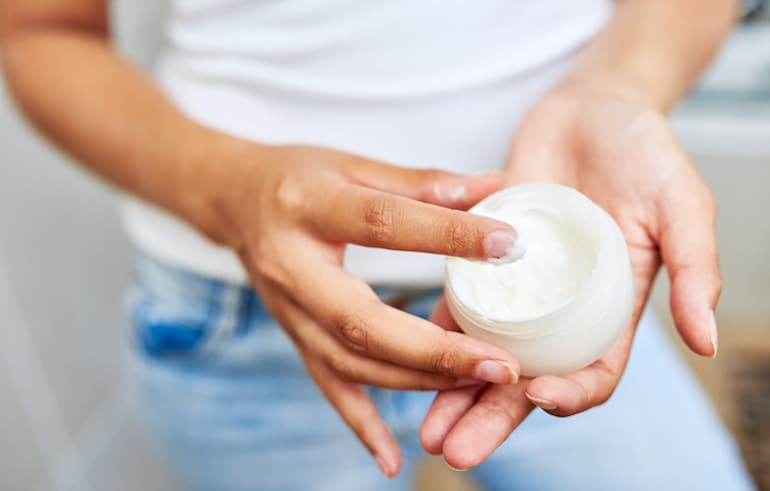
What does skin purging look like?
Skin purging can look different for everyone. For most people, they’ll experience bumps that look similar to a normal pimple, and even whiteheads or blackheads. Less often, people can exhibit more intense purging, such as:- papules that are sensitive to the touch
- pustules that are noticeably red and bumpy
- a mix of both
Is skin purging good or bad?
The good news is that skin purging doesn’t necessarily mean that a product isn’t working out for you. Quite the opposite, actually: It means that your new product is doing its job by helping your skin benefit from its ingredients. As you continue to use your new product, it’ll encourage your skin cell turnover rate to go faster. In the long run, you expect less purging and overall improvements in your complexion. That’s why the best results come with a consistent daily skincare routine.Skin Purging vs. Skin Reaction
It’s important to be able to tell whether your skin is purging or reacting negatively to a new product. Once you figure this out, you can decide whether or not to keep it in your routine. As it happens, your skin will break out if you’re having a reaction, allergy, or irritation to a new product. On the other hand, purging can occur as a response to the change in your skin cell turnover rate. Telling the difference between the two may not always be clear. However, to help decipher purging vs. reactivity, look at the blemish’s:- location
- color + texture
- timing
Skin Purging
- will occur in the areas where your typical breakouts occur
- blemishes are generally flesh-toned with minimal signs of irritation around the bumps
- may arise after the first day of using a new product or after a couple of uses
Skin Reaction
- blemishes will occur in new places on your face and neck
- blemishes are more visibly irritated + often painful to the touch; can appear red and bumpy
- in most cases, irritation may occur shortly after product use
How long does skin purging last?
As we saw above, skin purging occurs after a new skincare product forces your skin to renew itself more quickly. Because the skin’s cell turnover rate is usually 30 days, it can take a full cycle to clear. Rest assured that the skin is working to renew itself faster—hence the blemishes—so it may take less than 30 days to see improvement. As with all skin benefits and concerns, the timeline can vary for each individual.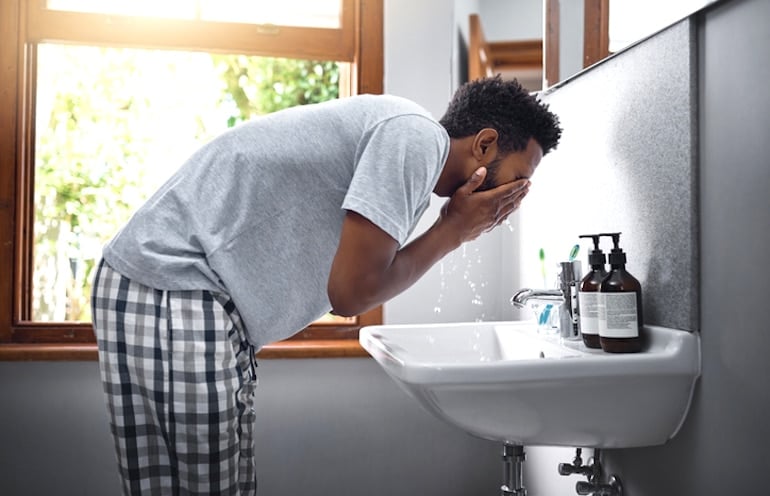
How to deal with skin purging
The best way to deal with skin purging is by avoiding any additional changes to your current skincare routine. You can also remember to take a simplified, slower approach to your regimen.Simplify Your Routine
As with any blemishes, you’ll want to avoid the use of harsh products or picking at the bumps. Instead, focus on a gentle, simple routine that focuses on the essentials, including:- cleansing your face
- moisturizing with a lightweight cream
- SPF protection
Slowly Introduce New Products
If your skin is already prone to breakouts, you should consider starting your new product slowly. For topical products, you might consider trying a small amount every other day. For skincare supplements, you should ask about lowering the recommended daily dose and slowly working your way up.The Bottom line
Skin purging occurs when your skin’s cell turnover rate speeds up as a result of trying a new product. Although it can be unpleasant, it’s actually a beneficial process for your skin to go through. For most people, the purging period should subside within 30 days. In the meantime, keep your skincare routine simple and gentle while you wait for your new, healthier skin cells to emerge!More like this
